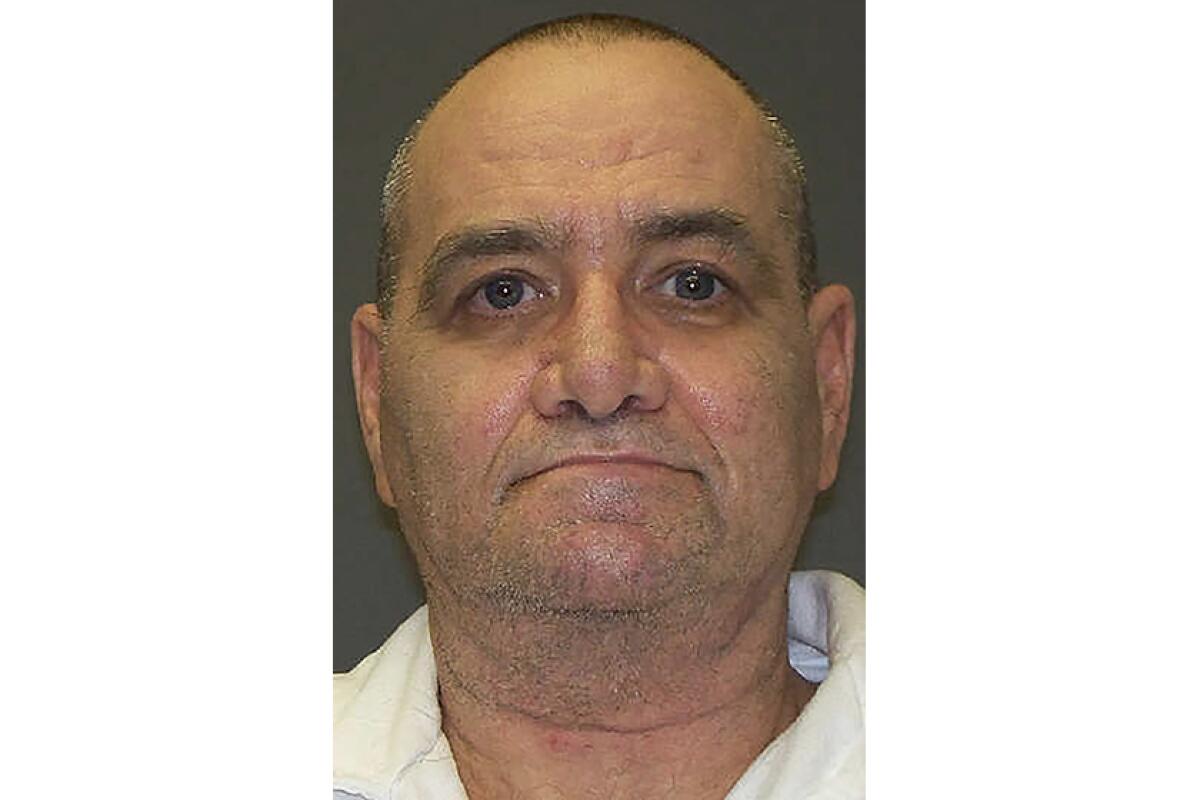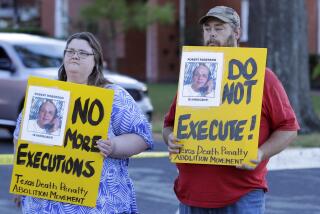Texas inmate executed for killing his wife in 2005

HUNTSVILLE, Texas â A Texas inmate with a history of violence against women was executed Wednesday evening for fatally shooting his wife, who had feared she would never get out of her marriage alive.
John Gardner, 64, received a lethal injection at the state penitentiary in Huntsville for the January 2005 slaying of Tammy Gardner. Prosecutors said the couple were getting divorced when Gardner broke into his wifeâs north Texas home and shot her in the head as she was sitting in bed. She died two days later.
Asked by the warden if he had a final statement, Gardner, strapped to the death chamber gurney, turned his head and apologized several times to his wifeâs son, daughter and mother, who watched through a window a few feet away.
âI would like to say sorry for your grief,â he said. âI hope what Iâm doing today will give you peace, joy, closure, whatever it takes to forgive. I am sorry. I know you cannot forgive me, but I hope one day you will.â
After telling several friends watching through an adjacent window that he loved them, he apologized again, adding that he didnât want to talk a lot and would ask the warden to go forward with his punishment because âI want to see the Lord Jesus so bad.â
Shortly after the lethal dose of the powerful sedative pentobarbital began, Gardner took three deep breaths and then began snoring. Within seconds, all movement stopped. He was pronounced dead at 6:36 p.m., 16 minutes later.
Gardner became the first inmate put to death this year in the U.S. Seven other executions are scheduled in the next few months in Texas, the nationâs busiest capital punishment state. Last year, 22 inmates were executed in the U.S., with nine inmates being put to death in Texas, the most of any state.
His appellate attorneys had asked the U.S. Supreme Court to intervene, alleging his trial lawyers were ineffective, particularly for failing to present evidence Gardner suffered from âabandonment rage,â a condition Gardner claimed causes men to kill their female companions with excessive force when faced with recent or imminent abandonment.
The Supreme Court denied the petition on Monday. Seth Kretzer, one of Gardnerâs attorneys, said he was âdeeply saddenedâ by the Supreme Courtâs decision. No other appeals were filed by his attorneys.
âFor those of us who are foot soldiers in the long war for conviction integrity, the struggle continues, the hope endures and the spirit never dies,â Kretzer said.
Prosecutors at trial described the marriage between John and Tammy Gardner as short but violent. She was Gardnerâs fifth wife. The couple married in 1999.
âHe was a classic abuser,â said Curtis Howard, who was one of the prosecutors for the Collin County district attorneyâs office.
Friends and family of Tammy Gardner, 41, testified that she lived in constant fear of her husband, who would hit and choke her and threaten her with a gun. Tammy Gardner had wanted to divorce him but told her boss at a wholesale horse-equipment company, âI canât leave; he will kill me.â
In December 2004, Tammy Gardner filed for divorce after borrowing money from her company to do so.
At work, she marked Feb. 7, 2005, on her calendar, the date her divorce would be final. She would go over to the calendar and say, âYouâre almost there. Youâre almost there,â according to trial testimony.
âShe was on pins and needles ... hyper-vigilant, looking out for him,â said Howard, who is now an attorney for the Plano, Texas, Police Department.
But sometime between 11 p.m. and midnight on Jan. 23, 2005, just 15 days before the divorce became final, John Gardner, who drove from Mississippi, broke into her home in Anna, Texas, and shot her in the head as she was sick in bed.
Despite being shot and unable to hear, Tammy Gardner called 911 and told a dispatcher her husband had shot her and he had left in a white pickup with Mississippi plates.
She was hospitalized but went into a coma and was taken off life support two days later.
In the petition before the Supreme Court, Lydia Brandt, one of Gardnerâs attorneys, had argued that if evidence of abandonment rage would have been presented at trial, it would have humanized him, âthereby providing a basis for a sentence of less than death.â
Howard said the theory would not have made a difference at trial because abandonment was not related to all of his many acts of violence, which included shooting his second wife, who was pregnant at the time and later died from resulting injuries, abducting his third wife at knifepoint and savagely beating his third wifeâs daughter.
Howard said in his career he prosecuted three death penalty cases and two of them were related to intimate partner violence.
âThis is one of those tragedies that we see in Texas all too often,â he said.
More to Read
Sign up for Essential California
The most important California stories and recommendations in your inbox every morning.
You may occasionally receive promotional content from the Los Angeles Times.










